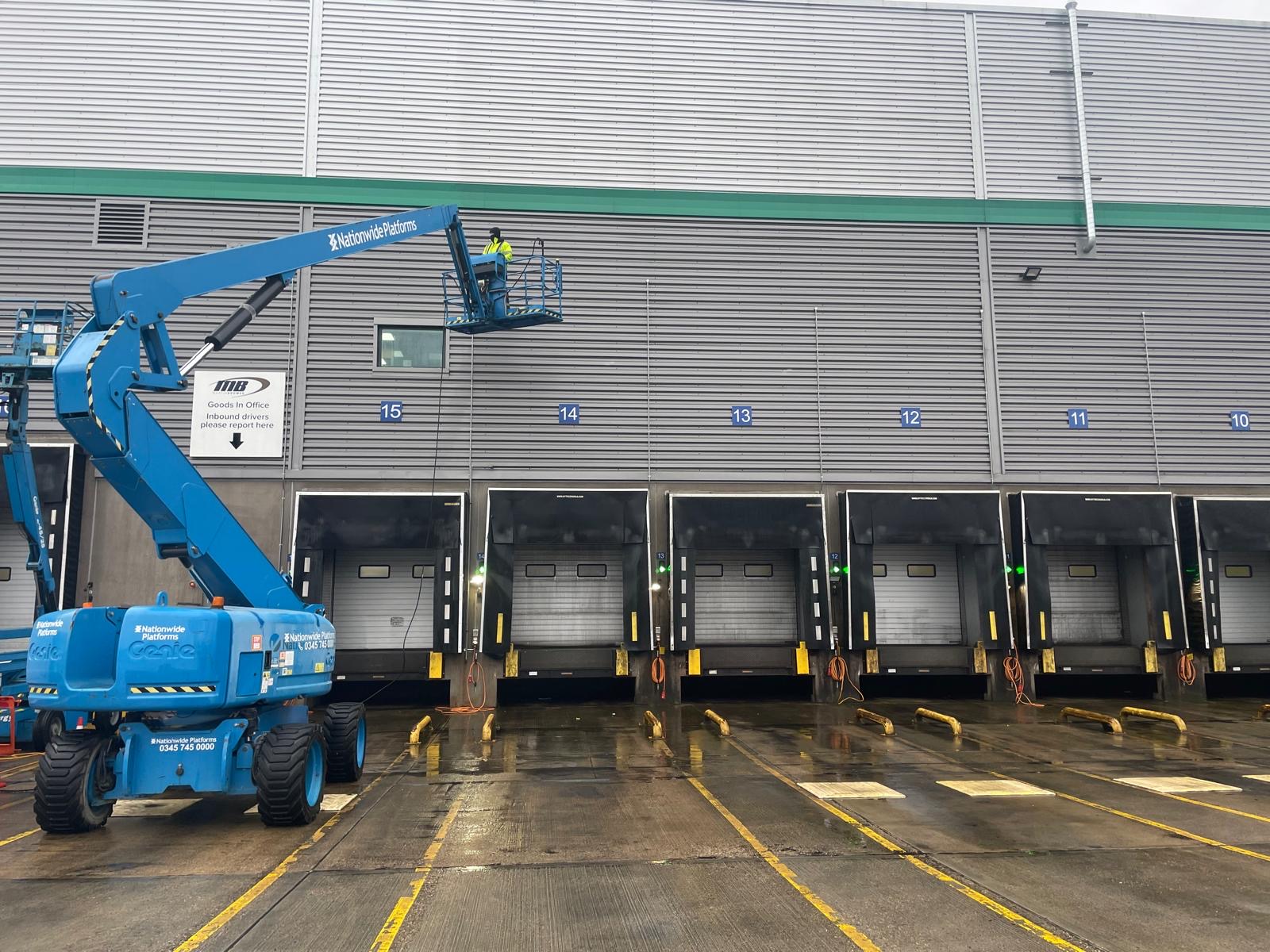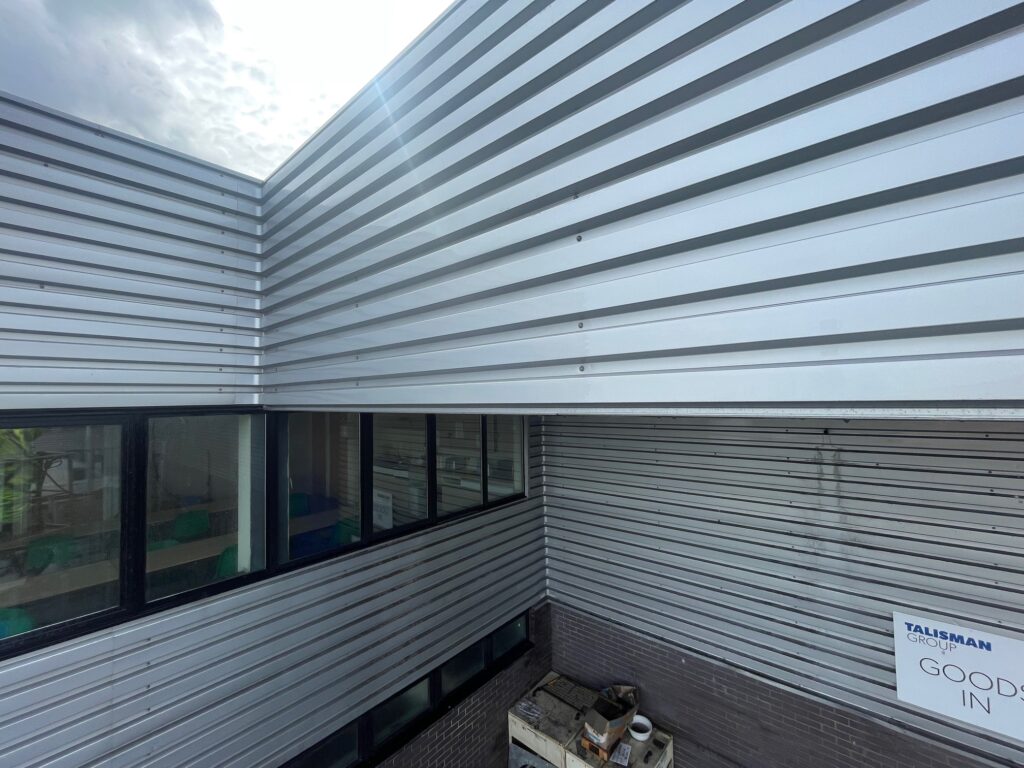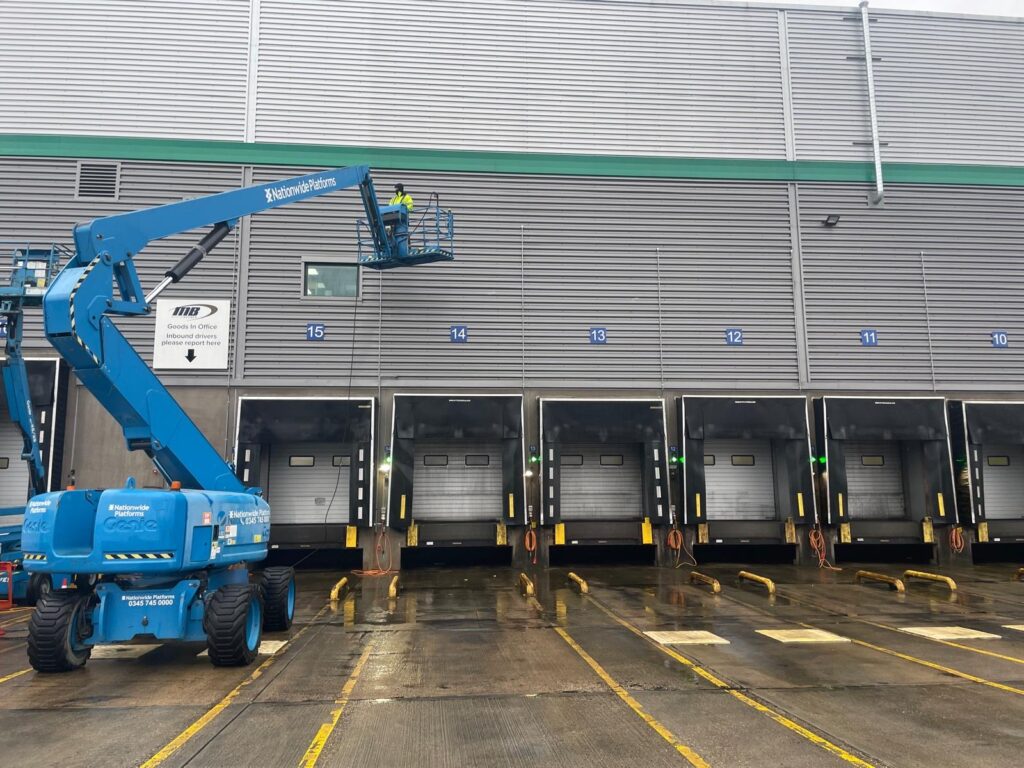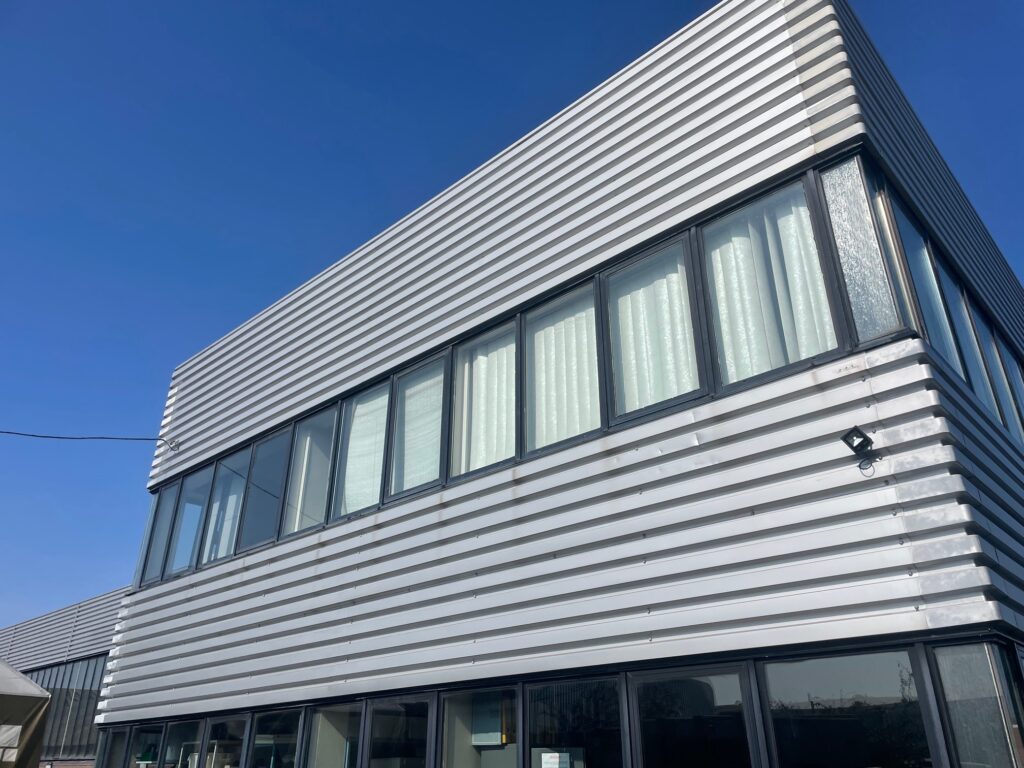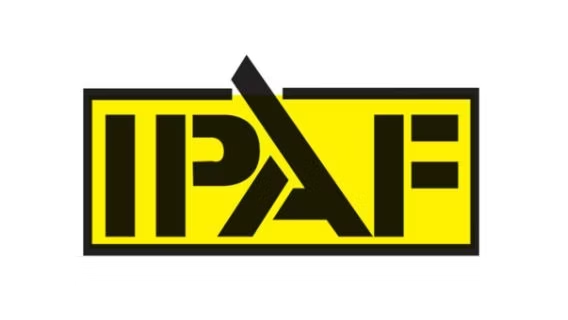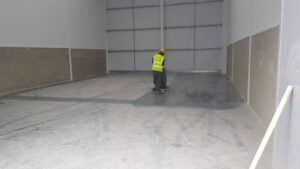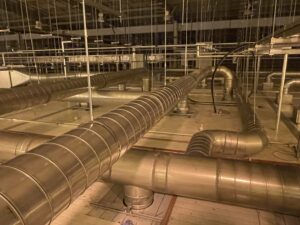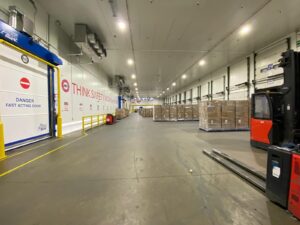External cleaning of warehouses, logistic hubs and distribution centres.
From air pollution and bird droppings to moss, mould and graffiti, commercial buildings are under constant attack from environmental elements. The UK’s damp climate exacerbates these problems, particularly in urban areas where grime from vehicles and industrial activity quickly builds up.
According to a report from the Royal Institution of Chartered Surveyors (RICS), regular cleaning and maintenance can extend a building’s lifespan by up to 30%. In an age where sustainability is key, that kind of durability is not only financially savvy but environmentally responsible.
1. Enhances Kerb Appeal and Brand Image
Your building’s exterior is the first thing clients, customers, and potential tenants see. A clean and well-maintained façade projects professionalism, competence, and care. A dirty building, on the other hand, may convey neglect and damage your reputation.
- A article within CEO Today explains the importance of a well maintained commercial building, “When a client encounters your grounds for the first time, or even after returning, issues with maintenance, care, and accessibility (including health and safety) have the power to change the perception of your business.”
If you’re in retail or hospitality, this visual impact is even more crucial—potential customers often make snap decisions based on appearance alone.
2. Prevents Structural Damage
Dirt and grime aren’t just unsightly; they can also be damaging. Algae, mould, and moss can eat into paintwork, concrete, and stone over time. Bird droppings, which are highly acidic, can degrade stonework and corrode metal. Water stains and pollution can cause long-term damage to façades, leading to expensive repairs.
An article on Shun Waste explains the impact of pollution and degradation on historical buildings, especially when buildings are not regularly cleaned.
Regular cleaning prevents this deterioration, allowing early identification and mitigation of minor issues before they escalate.
3. Ensures Compliance with Health and Safety Regulations
The exterior of your building isn’t just a cosmetic issue—it’s a legal one too. Under the Health and Safety at Work Act 1974 and the Occupiers’ Liability Act 1957, building owners have a duty of care to ensure the premises are safe for staff, customers, and the public.
Moss and algae on walkways can be slip hazards, loose debris can cause injury, and falling masonry can lead to liability claims.
- The HSE (Health and Safety Executive) reported that slips, trips, and falls account for over 30% of workplace injuries in the UK—many of which are preventable through basic building upkeep.
4. Improves Energy Efficiency
You might not immediately link building cleanliness to energy usage, but the two are connected. Dirty windows reduce natural light penetration, leading to increased reliance on artificial lighting. Likewise, clogged gutters and drainage systems can cause damp, which forces heating systems to work harder.
A clean exterior helps your building operate more efficiently, ultimately saving on energy bills.
The Risks of Not Cleaning Your Building
Failing to clean the exterior of your commercial property comes with a host of risks, from financial to legal:
1. Reduced Property Value
Properties that are visibly neglected typically fetch lower valuations. For landlords or commercial property investors, this translates to lower rents and diminished capital value. According to Verity, “A poorly maintained building can suffer from depreciation, making it harder to sell or refinance.” compared to well-maintained counterparts.
2. Damage to Reputation
A dirty or degraded building can erode customer trust and deter footfall. In sectors like hospitality, retail, and healthcare, appearance is directly tied to reputation.
Online reviews and social media images can spread the negative perception of an unkempt business rapidly impacting not just local but global brand perception.
3. Increased Maintenance Costs
Preventive maintenance is always cheaper than reactive repairs. Allowing grime, mould, and pollutants to build up leads to long-term damage that requires specialist repairs or full refurbishments—both of which are costly and disruptive.
What Are the Disruptions?
Some business owners delay exterior cleaning due to perceived inconvenience. However, professional commercial cleaning services are designed to minimise disruption.
- Access equipment, such as cherry pickers and rope access technicians, allows work to be completed without interfering with day-to-day business.
- Out-of-hours services mean that cleaning can be scheduled for evenings or weekends to avoid peak operational periods.
A well-planned exterior clean can usually be completed with minimal disruption to staff and customers.
Impact on Service and Business Operations
Neglecting exterior cleaning can also impact staff wellbeing and performance. Employees are more likely to feel pride in their workplace and stay engaged if the environment is clean and cared for. Conversely, a grimy and poorly maintained building can affect morale and even contribute to higher staff turnover.
For customer-facing businesses, an unattractive building exterior may cause potential clients to turn away, leading to lost revenue and a decline in business.
The Most Effective Cleaning Methods
There’s no one-size-fits-all approach to exterior building cleaning. The method depends on the surface, level of soiling, and accessibility.
- Jet washing: Effective for concrete and paved surfaces but must be used carefully to avoid damage to softer stone.
- Soft washing: A low-pressure method using eco-friendly chemicals to remove algae and mould—ideal for delicate façades.
- Steam cleaning: Useful for heritage buildings or when chemical use must be minimal.
- Graffiti removal: Special solvents and pressure washers can restore surfaces without damage.
Professional contractors will conduct a site survey and advise on the most suitable approach.
Choosing a Reputable Cleaning Contractor
When choosing a contractor, look for:
- Accreditation (e.g. CHAS, SafeContractor, IPAF, PASMA)
- Public liability insurance
- Experience with similar buildings
- Eco-friendly cleaning solutions
- Detailed risk assessments and method statements
A reputable provider will tailor the cleaning plan to your building’s needs, schedule it at your convenience, and offer regular maintenance contracts for ongoing support.
Conclusion
In a competitive commercial landscape, the exterior of your building speaks volumes about your business. Regular cleaning protects your investment, ensures compliance, enhances your brand, and supports a healthy, productive environment.
Far from being a cosmetic luxury, exterior building cleaning is a fundamental part of commercial property management. When neglected, the consequences—financial, reputational, and legal—can be significant.
Whether your property is a modern office block in Leeds or a historic retail site in Edinburgh, investing in regular exterior cleaning will pay dividends for years to come, contact ACC Commercial Cleaning
